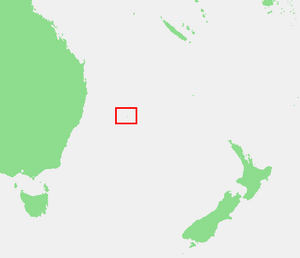Kentia palm facts for kids
The Kentia palm (also called the thatch palm) is a beautiful flowering plant. Its scientific name is Howea forsteriana. This palm grows naturally only on Lord Howe Island in Australia. It's also grown a lot on Norfolk Island.
Kentia palms grow slowly, but they can get quite tall, up to 10 meters (about 33 feet) high and 6 meters (about 20 feet) wide. Their long leaves, called fronds, can be up to 3 meters (about 10 feet) long! The palm was named "forsteriana" after two naturalists, Johann Reinhold Forster and Georg Forster, who traveled with Captain Cook on his second trip around the world.
This palm is considered vulnerable by the World Conservation Union. This means it needs protection to survive in the wild. People grow Kentia palms on Lord Howe Island by collecting their seeds. They then sprout the seeds to sell the young plants all over the world. These plants are popular for gardens or as house plants. The rules for selling these seeds and young plants are very strict. This plant has even won an award from the Royal Horticultural Society for being a great garden plant.
Quick facts for kids Kentia palm |
|
|---|---|
 |
|
| Howea forsteriana in habitat | |
| Conservation status | |
| Scientific classification | |
| Genus: |
Howea
|
| Species: |
forsteriana
|
 |
|
| H. forsteriana is endemic to Lord Howe Island | |
History of the Kentia Palm
The Kentia palm became very popular as a houseplant in Europe and the United States during the Victorian era. This was a time when people loved collecting unusual plants. The Kentia became the most popular "parlor palm" starting in the 1870s. This is when seeds from Lord Howe Island were first sent out.
One reason it was so popular is that it could grow well indoors. Many homes had low light, dry air, poor air quality, and cool temperatures. Other palms couldn't survive these conditions, but the Kentia palm could!
By 1885, the palm was a top choice in Britain. A gardening magazine said that Kentias were in high demand because they were beautiful and lasted a long time. Queen Victoria also helped make them famous. She grew them in all her homes. She even asked for Kentia palms to be placed around her coffin when she passed away. Because royalty used them and they were expensive, having Kentia palms showed that you were important.
Palm Courts became popular in Edwardian hotels. Hotels like The Ritz Hotel in London and the Plaza Hotel in New York featured Kentia palms. People liked their elegant, drooping fronds and how tall they grew. Today, you can still see Kentia palms in hotel lobbies, casinos, and shopping malls. Even the R.M.S Titanic had potted Kentia palms in its Verandah Café.
Growing Kentia Palms
The Kentia palm is an elegant plant. It's a favorite for growing indoors because it doesn't need much light. Outside, it prefers warm, tropical areas. However, it can also grow in cooler places. It can handle temperatures as low as -5 °C (23 °F) for a few hours, but usually, temperatures should stay above 10 °C (50 °F).
You can easily find them growing outdoors in southern Australia and northern New Zealand. They are common in gardens and as street trees. In the Northern Hemisphere, they can grow in places like southwest England, southern Spain, and the southern United States. There, they can even produce flowers and fruit. The coasts of the southeastern Azores and Madeira have climates similar to where they grow naturally.
Kentia palms grow slowly, but they can reach heights of 6 to 18 meters (20 to 60 feet). In nature, they grow as single trees. Getting their seeds to sprout can be tricky.
The Belmore sentry palm (Howea belmoreana) is a close relative. It also grows only on Lord Howe Island. It's a smaller palm, growing up to 7 meters (23 feet) tall. It usually grows under taller trees in moist forests.
When you buy a potted Kentia palm, it usually has 2 to 5 young plants grouped together. This makes the plant look fuller and bushier. They are still quite expensive to buy. This is because the rules for sending seeds from Lord Howe Island are very strict. Also, not many seeds sprout, and the plants grow slowly. It takes years for them to reach a size that can be sold. In Europe, most Kentias are grown in Holland and then sold across the continent. They are more popular and cheaper in Europe than in the United States. In the U.S., many are grown in Hawaii before being sent to the mainland.
Caring for Your Kentia Palm
Kentia palms are quite tough as potted plants. They can handle low light, dry air, not being watered often, and cool temperatures. However, it's best to give them bright, indirect light. This helps them grow better and look stronger. Palms kept in dark corners often look thin and grow very slowly.
If your home is in the northern hemisphere, a window facing north or northeast is best. Kentias grown in greenhouses can get sunburned if they get direct sunlight.
The roots of Kentia palms are very sensitive. So, you should only repot them when they are very crowded in their current pot. Even then, be very careful. They like regular water, but you should let the soil dry out between waterings. Giving them too much water, or letting their roots sit in water, can cause root rot and kill the palm. You should use an indoor plant fertilizer regularly in spring and summer to help them grow.
If you keep your Kentia palm indoors, it's a good idea to mist its fronds three times a week with rainwater. This helps to increase the humidity around the plant and keeps the fronds looking green and healthy.
See also
 In Spanish: Kentia para niños
In Spanish: Kentia para niños




